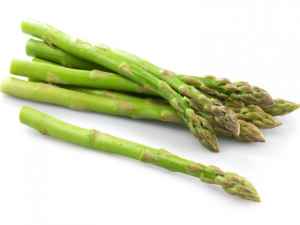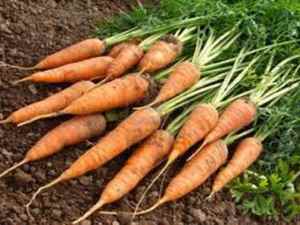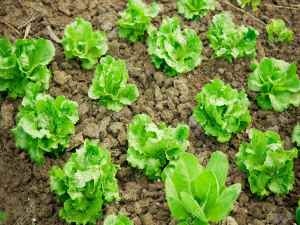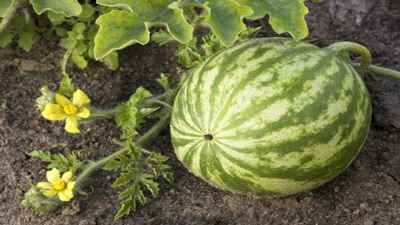Growing Your Own Food (making your own emergency food crisis garden)
Making your own survival garden can be preparatory or begun in an emergency situation only. Either way, an emergency seed bank is essential. In the event of a financial collapse, food prices are going to sky rocket more than they already are. Something as simple as automobile use going up (or gas prices going down), raises the consumption of gas, which causes the need for ethanol to increase, and ultimately ethanol comes from corn; therefore corn will be more expensive from a seemingly unrelated event, like it is now. That’s an example of a food cost increase resulting from an economic and political correlation. The human population is another example of a cost increasing variable.
The more people in the world, the higher the demand for sustenance and ultimately the higher the cost. The number of people in the world increases roughly 1.1 percent each year (75 million new people) and it does not seem to be slowing down. Food prices should go up naturally for this reason alone, as sure as inflation. Natural disasters also play a huge part in the cost of food, globally. For example, in 2011 there was a crucial earthquake and tsunami in Japan which caused seafood to spike 6 percent in cost, globally. Food costs are expected to rise as well when crops are destroyed in large quantities (hurricanes, flash floods, wildfires, etc.). When the cost of oil goes up, transportation costs increase, the end price of food to the consumer goes up as it is more expensive to transport. Governments also regulate the use of fertilizers, pesticides and other chemicals, which can increase the cost to the farmers and producers; ultimately the costs are again passed to the consumers.
Some people begin growing their garden in advance, even stock piling their emergency food supply from their own grown garden output. Others simply rely on stocking the necessary tools to properly grow (Hoe , shovel,spade, fertilizer, soil, location, clean water supply plan, pH meter and humidity monitor, etc). If the garden is being grown indoors or underground, the appropriate air filtration must be in place to keep the air fresh, and the lighting must be exactly correct. Full spectrum lights are capable of substituting for sunlight and is considered just as high quality and balanced as its natural light. If it is an above ground garden plan, a location should be preplanned, accounting for the effects of disasters (the location needs to be void of any flooding, contamination, radiation, or anything else which would render the food produced uneatable). Seed banks are important as they provide a redundancy, a backup plan so-to-speak, for an active garden in the event an emergency or disaster destroys the garden. Seed banks are also required to begin a new garden. Regardless, a seed bank should be collected and properly stored no matter what the plan.
Growing a survival garden can mean a huge space meant to support a large number of people, or a 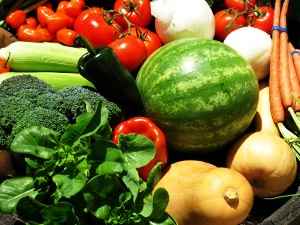 smaller garden space to sustain a single individual and everywhere in between. Using strong wood (to avoid rotting) or cinder blocks to frame the planned garden area helps keep soil and fertilizer in, as well as outside influences out. Some people choose to use individual pots. Ultimately the space comes down to a “per plant” situation; each plant needs adequate space to develop and fully mature, as well as the nutrient-rich soil and fertilizer to maximize its growth potential. There are a lot of soil options, and the best soil for a vegetable garden may be different depending upon the individual vegetables, climate, region, emergency or disaster conditions (both current and anticipated), precipitation, humidity and more. Many people choose a soil with amendments like humus or compost; especially in a contained garden. If the vegetables are being grown in individual containers, such as pots, the soil should contain builder’s sand, compost, and peat moss (all equal in portion). Having a good soil will help build healthy plants faster, increase the quantity and quality of yield, and strengthen disease resistance.
smaller garden space to sustain a single individual and everywhere in between. Using strong wood (to avoid rotting) or cinder blocks to frame the planned garden area helps keep soil and fertilizer in, as well as outside influences out. Some people choose to use individual pots. Ultimately the space comes down to a “per plant” situation; each plant needs adequate space to develop and fully mature, as well as the nutrient-rich soil and fertilizer to maximize its growth potential. There are a lot of soil options, and the best soil for a vegetable garden may be different depending upon the individual vegetables, climate, region, emergency or disaster conditions (both current and anticipated), precipitation, humidity and more. Many people choose a soil with amendments like humus or compost; especially in a contained garden. If the vegetables are being grown in individual containers, such as pots, the soil should contain builder’s sand, compost, and peat moss (all equal in portion). Having a good soil will help build healthy plants faster, increase the quantity and quality of yield, and strengthen disease resistance.
A container garden hosts a set number of plants, sometimes the plants are in their own individual containers. When growing plants within a container garden, each container needs to be able to properly drain (even if just one container is being used), meaning holes must be drilled in the bottom of the pot, bucket or container. The best plants to grow in a container garden (not necessary pots, some require larger spaces, but nonetheless are contained) include:
Asparagus: This is a very nutrient-rich plant which does very well in a container garden. Very little maintenance is required, just enough space to develop (these grow above ground rather than under and require a little wider space than some other plants). Three per 5 gallon bucket, evenly spaced apart will be enough along with a little sunlight and water each day.
Artichokes: These healthy plants do not taste very pleasant, however, are extremely low in maintenance and only require a little sunlight and tiny bit of water each day. They do take a little longer to germinate and generally 4-6 months to grow. They thrive in containers and 5 gallon buckets are perfect to host a few artichokes.
Bananas: A banana plant can be grown indoors or outdoors (easier indoors without a proper tropical climate) and are generally called dwarf banana plants when grown in container gardens. These are perennial plants and the same plants will continue to yield bananas each year. These pots should be quite deep and provide adequate draining and can even do well in the winter time when properly cared for. 5 gallon buckets will work.
Basil: Often grown with other herb-based greens (parsley for example), basil is a great indoor plant, only requires a six inch deep container and a little sunlight each day (usually the window sill works great). Do not wet the stem or leaves while watering, only the soil.
Beans: These can be grown in larger containers for larger quantities…5 gallon buckets work great (as long as the container is greater than a foot in diameter). These benefit from clinging to a support as they grow (they climb)…so use of a rail, pole or trellis of some type is essential to maximize the yield.
Beets: These grow great indoors or outdoors and are easy to grow in just about any season. Beets are very durable and quite resilient. They require light sowing (planting the seeds, almost “lacing them” a couple of inches into the soil) and will harvest large quantities from reasonable sized containers.
Broccoli: This veggie is easy to grow in reasonable, 1-2 foot diameter planters with just a little light watering and sunlight. Broccoli requires at least eight inches deep to successfully develop and maximize potential.
Cantaloupe: Cantaloupes can be planted in larger containers and are usually grown and harvested in the summer season. Diverse types of cantaloupe can be grown in a container, so long as it is large enough, and the vines can be contained and controlled, or let to climb and spill over the side of the container. Melons require more room later on, so bear in mind the diameter must allow for the growth patterns later in the development as well. Poles and supports are often used for the vines, producing stronger plants and greater quality and size yields.
Carrots: These orange veggies absolutely thrive in container gardens and grow very quickly. Sow the seeds 1-2 inches deep, very lightly, as growth will begin rather rapidly. Growth will be noticeable after just one week, even with artificial sunlight.
Cauliflower: This vegetable does extremely well in containers and requires an eight inch deep planter, roughly 1.5 feet in diameter to properly grow each one.
Chives: These herbs are fantastic additions to a container garden and grow in almost any region. They are perennials and will continue to produce from the same plants each year. They require a little sunlight everyday (which can be through a window for example even in the winter time).
Collard Greens: Requiring only 6 hours of sunlight a day, collards grow best in the cool months (not too cold and not too hot). They can be grown in the summer and winter if the temperature is somehow regulated. Simply moving the buckets in and out of the shade in summer and avoiding direct sunlight will be adequate so long as it is not too hot; however, these greens will not survive the cold of winter, so an indoor growth or warming plan is necessary to produce winter collards.
Cucumbers: Cucumbers are special in that most of the time they can be kept growing even in winter months. They are capable of growing vertically with the right support and influence, and are considered great for tight space gardens.
Eggplants: 1-2 seeds per container, depending upon the size of the planter (as long as it allows growth at least 6 inches deep). Eggplants benefit from clay pots, since clay pots generally provide a healthier environment for plants. Clay pots remove excess moisture from the soil and eggplants should not be overwatered, and should be kept warm. As they grow, they will require support (a bean pole for example or other wooden stick).
Kale: Kale requires only a little space to grow. In fact, a 2 foot diameter (24 inches) planter can support up to 6 kale plants. They require just the right amount of H2O to never be dry, and also never be overwatered. Additionally, spring and fall months provide the best temperatures for kale growth to thrive.
Lettuce: This is a very easy plant to grow and will thrive in a container. Lettuce is easy to replant at the end of its growing cycle, to start the following grow. Lettuce can be grown with other green vegetables (collards, parsley, cilantro, etc.). A large container is ideal, given the fanning growth pattern the plant produces.
Mushrooms: Known to add flavor, they are so easy to grow and do well even in small containers.
Onions: All types of onions grow well in container gardens as long as they are given at least 5 inches depth to grow in their planter. It is acceptable to grow several in the same container, with only an inch being required between them.
Oregano: This herb thrives in container gardens and does very well in tighter spaces. Smaller containers are used for oregano with potting soil, reasonable sun and room temperature.
Parsley: Very durable and resilient, able to grow in tight spaces and with other herbs and in nearly all container conditions. Parsley only needs a little sunlight each day and should not be overwatered. Parsley is a great winter plant and can thrive in temperatures as low as 40 degrees Fahrenheit and as high as 80 degrees Fahrenheit.
Parsnips: Deep containers are required for Parsnips, as they will grow quite long and tall (a 5 gallon bucket will work). Several seeds can be placed in each bucket. They take a couple of weeks to grow.
Peas: These will benefit from a climbable growth plan (trellis, fence, rail, pole, etc), as they will thrive with the ability to grow tall, while maintaining their strength as they cling to their support. Peas grow faster and stronger outdoors and during the warmer seasons.
Peppers: Peppers are all different in size. Smaller peppers require a 2 gallon bucket, minimum. Larger peppers require a 5 or 10 gallon bucket or planter. Only 1-3 peppers should be grown per container to avoid running out of room later in development. Peppers generally require 8 hours of sunlight a day.
Pineapple: These unique fruits have very large seeds: their crown. The top part of the pineapple, called the crown, is the seed itself. To properly plant a pineapple “seed”, cut the crown off the top of a fresh pineapple, soak the crown in water for a day to increase moisture, and plant in the center of its container (should be roughly a gallon in size). Pineapple can grow in the winter, as long as it is not left outside at night or in extreme cold.
Potatoes: Potatoes can be grown year round when developed in a container garden and properly planted, cared for, and harvested. 5 gallon buckets make excellent containers for a potato grow and are capable of yielding 1-2 pounds per bucket each growth cycle.
RELATED : Growing Potatoes in Straw: A Labor-Saving/Better Harvest Technique
Quinoa: This vegetable is packed with vital nutrients and thrives in container gardens. Quinoa is considered a whole grain and very resilient in growth and development. These plants will grow about 2 feet tall and require a larger planter (5 gallon bucket will work for about 3 to 5 seeds evenly spaced).
Radishes: An acquired taste, though, sometimes very helpful for adding special flavor. Radishes are especially easy to grow, and require only a small, thoroughly cleaned paint bucket (still drill holes for drainage). They require a couple of hours of sunlight each day, but only need to be watered every few days.
Rosemary: Prefers alkaline pH (thrives with acidic soil), should not be overwatered, and needs to have time to get a little dry between watering. This herb does very well when grown with other green herbs (basil, parsley, sage) and benefits greatly from potting soil containing less peat moss.
Sage: This delectable herb is used for seasoning and grows well in both indoor and outdoor planters, even in the window sill.
Squash: One of the best container plants, especially summer squash. Squash grows in almost all conditions and is extremely resilient. It just needs to be harvested routinely, as plants will continue to produce yields and backed up yields will cause growth limitations. These grow fast and will produce 2-4 squashes each week per plant.
Spinach: Spinach is one of the super vegetables that should be a part of every emergency survival garden and emergency food supply. Spinach is very good for the body and contains a lot of necessary vitamins and minerals (Vitamin A, B6, B12, C, D, Calcium, Iron and Magnesium). Each plant requires its own 8 inch wide, 6 inch deep (minimum) container and should be kept as close to room temperature as possible or slightly cooler (spinach actually does quite well in the winter).
Strawberries: These little guys totally love container grows! They do require a lot of space to develop, however, choosing a larger container makes for an awesome indoor yield. In fact, strawberries can be grown year round if properly cared for. They require 7-10 hours of sunlight a day, which can even be attained from a window (or artificial light). A large 36 inch planter can support 1 plant (they should be 18 inches apart, therefore a round diameter of 36 inches provides the 18 inches on all sides). It is often better to build a framed container many feet in dimensions in order to support a larger strawberry garden.
Thyme: This herb thrives in containers, can be grown indoors or out, and makes an excellent addition to a window sill garden. Thyme is frequently planted with basil, oregano and parsley. Do not overwater thyme to avoid poor yields.
Tomatoes: One of the best container plants, tomatoes are strongly versatile…only requiring an adequate size container to fully develop. Tomatoes can even be grown hanging upside down. Tomatoes are commonly provided a trellis or cage of some sort to help provide support as they grow.
RELATED : Single Plant that Grows Both Tomatoes and Potatoes at the Same Time
Turnips: These root plants are superstars in planter-based grows and thrive as long as they are hosted in 8 inch deep planters minimum. Turnips are subject to overwatering, and therefore do much better in contained gardens.
Watermelon: The vines that come from the development of watermelon will cling and climb nearby support, so use of a trellis, rail or pole is a wise addition to a watermelon container. Watermelon can grow indoors or out (outdoors requires warmer temperatures). Just a bit of sunlight is required, but watermelon requires more water than a normal plant.
Zucchini: Similar to squash, zucchini is strongly versatile and has a durable development. It grows fast, thrives in container gardens, and produces 6 to 10 pounds of zucchini per harvesting season. Zucchini is 95 percent water. (Source)
Other useful resources:
The Lost Ways (Learn the long forgotten secrets that helped our forefathers survive famines,wars,economic crisis and anything else life threw at them)
Survival MD (Best Post Collapse First Aid Survival Guide Ever)
Backyard Innovator (A Self Sustaining Source Of Fresh Meat,Vegetables And Clean Drinking Water)
Blackout USA (EMP survival and preparedness)
Conquering the coming collapse (Financial advice and preparedness )
Liberty Generator (Build and make your own energy source)
Backyard Liberty (Easy and cheap DIY Aquaponic system to grow your organic and living food bank)
Bullet Proof Home (A Prepper’s Guide in Safeguarding a Home )
Family Self Defense (Best Self Defense Strategies For You And Your Family)
Survive Any Crisis (Best Items To Hoard For A Long Term Crisis)
Survive The End Days (Biggest Cover Up Of Our President)
Drought USA (Discover The Amazing Device That Turns Air Into Water)



